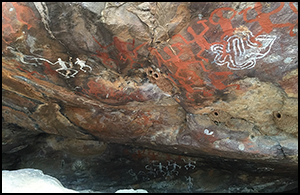Published online by Cambridge University Press: 15 September 2016

Skeletal remains from a burial in New South Wales exhibit evidence of fatal trauma, of a kind normally indicative of sharp metal weapons, yet the burial dates to the mid thirteenth century—600 years before European settlers reached the area. Could sharp-edged wooden weapons from traditional Aboriginal culture inflict injuries similar to those resulting from later, metal blades? Analysis indicates that the wooden weapons known as ‘Lil-lils’ and the fighting boomerangs (‘Wonna’) both have blades that could fit within the dimensions of the major trauma and are capable of having caused the fatal wounds.